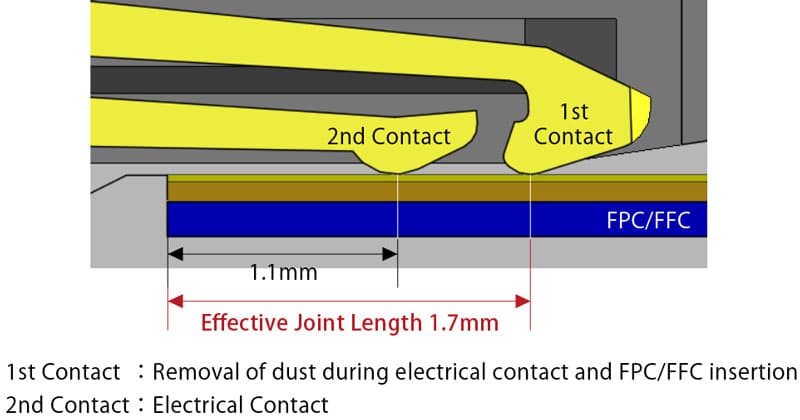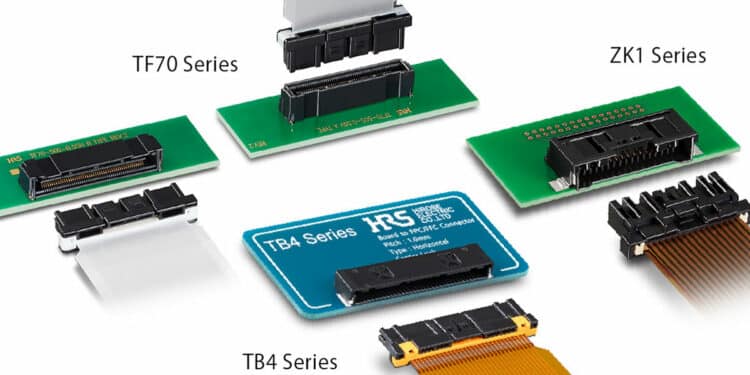Hirose Electric releases three new FPC Direct Connection Structure board to board connector ZK1, TF70, TB4 series that are useful for increased capacity, advanced functions, and small size conversion of automotive battery.
In order to extend the driving range of EVs (electric vehicles), battery capacity is increasing and advanced functions/small size are being introduced. The trend is changing from cable connection (discrete wire connection) to FPC/FFC connection.
To meet these needs, Hirose Electric began selling 3 types of FPC/FFC connectors in 2024. All of these connectors have an FPC direct connection structure and require little time to harness.
These FPC/FFC connectors are of automotive quality and feature high heat resistance performance, making them widely applicable to industrial equipment such as machine device and robots.
| ZK1 Series | TF70 Series | TB4 Series | |
|---|---|---|---|
| Features | High Hardness, CPA Included | Narrow Pitch, Vertical Variation | Low Back |
| Structure | FPC Direct Connection | FPC Direct Connection | FPC Direct Connection |
| Pitch | FPC Pitch=2mm×2 sheets Mounting Pitch=1mm | 0.5mm | 1mm |
| Height | 11mm | 6mm | 4.5mm |
| Depth | 25.1mm | 11mm | 12.5mm |
| Number of Positions | Available : 32 Under Planning : 24, 40 | Available : 50 Under Planning : 30 | Available : 16, 30 Under Planning : 10, 22 |
| CPA Support | ✓ | ー | ー |
| Vertical | ー | ✓ | ー |
| Operating Temperature | -40 to 125℃ | -40 to 105℃ | -40 to 125℃ |
| Lock Strength (N) | 100 | 98.1 (10kgf) | 98.1 (10kgf) |
| Prying Force (Top) | 78N or more | ー | 60N or more |
| Vibration | LV214-S3, USCAR-V2 | ー | USCAR-V2 |
Advantages of Replacing FPC-to-Board Connectivity (Simplified Assembly, Small Size/Light Weight Set)
The discrete wire method requires more man-hours to harness, as it requires soldering, Crimp, and insertion into each Contact. In addition, the weight increases in proportion to the number of cores.
On the other hand, FPC direct connection can be completed simply by inserting the FPC into the plug housing and attaching a retainer. There is little variation in quality, and features advantage is that it is light because it is FPC.
High Contact Reliability
These FPC/FFC connectors (ZK1, TF70, TB4 Series) are designed with a wide effective engagement length to ensure contact reliability.
In addition, the ZK1 and TB4 Series have an independent Two-point Contact Design to help remove foreign objects during connection and maintain the connection if a foreign object is caught in one of the contacts. (The structure of TB4 series is shown as an example.)

F70 Series Offers a Choice of Right Angle or Straight Connections
With a narrow pitch of 0.5 mm, features TF70 series offers a choice of right angle or straight vertical variations. The FPC/FFC connectors allow flexibility in design because they can be selected according to application specifications.






